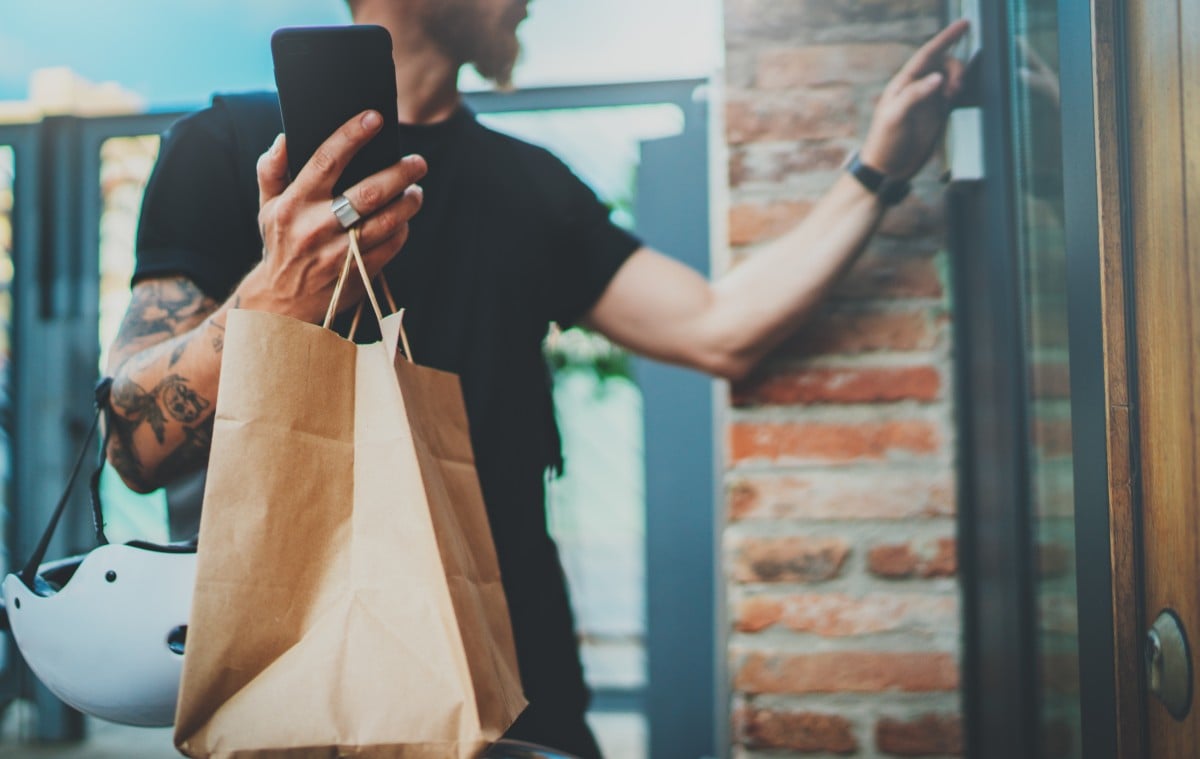While alternative shopping methods were demonstrating substantial growth before 2020, that growth nearly doubled and research, like ours, suggests the spike will have staying power.
From empty shelves to fears of COVID-19 exposure, 2021 saw online shopping surge.
How businesses respond to these shifts requires, in part, understanding the nuances of e-commerce, how it factors into both traditional and digital marketing strategies, how shoppers of various generations adopt technology and adapt to shifts, and how technology factors into consumer behavior. From meeting demands to exceeding consumer expectations, there’s opportunity in every aspect from marketing messaging and customer touchpoints to additional amenities and improved services.
The insights provided by our market research team enable us to provide not just the emerging consumer trends that will shape the coming year but to work with our client partners on how to leverage those trends. Over the coming year, the shift to online and mobile shopping will continue to shape the retail landscape, and understanding those trends can help your business stay ahead of the curve.
The Rise of Online Shopping
The online shopping spike retailers saw due to the pandemic is significant. As a retail channel, especially in some industries like grocery shopping, consumers were slow to adopt online options. The widespread acceptance of online shopping likely took longer than most people know. E-commerce and online shopping existed well before the modern internet. While the juggernaut that is Amazon was a few years off, Book Stacks Unlimited beat them to the punch with the first products sold via a bulletin board system.
Then, Amazon made its debut in 2005, the same year that brought us CyberMonday. Much like online shopping itself, CyberMonday didn’t gain real traction until other services facilitated both payments and deliveries.
In 1998, three years after Amazon arrived on the scene, PayPal entered, facilitating online payments and paving the way for safer online payments and, later, contactless or touchless payment methods. Over the next few years, the online world saw the introduction of Google AdWords (followed by Google Wallet), e-commerce platforms like Shopify, Stripe, ApplePay, and social media advertising linking right to shops for quick sales.
In short, it took about a decade for payment technology to speed up the pace of online and mobile shopping and help foster consumer adoption. The role of electronic payment methods is essential and integral to how shoppers engage with retailers, especially when it comes to digital shopping opportunities. We’ll discuss later how that trend is prevalent even today.
Before COVID-19, online shopping enjoyed steady growth, and, as we’ve discussed, that growth really spiked in 2021. In fact, our recent survey of holiday shoppers found significant interest in online shopping as it provided time savings, easy comparison shopping, and more convenient gift delivery. Our more recent research also supports increased interest and shows that half of consumers reported shopping more online than they had in the past.
Growth is expected to continue as well and likely because the advantages of online shopping benefit both businesses and consumers. More specifically, retailers should be investing in the research that informs their digital commerce strategies because mobile shopping can:
- Increase customer base (no geographical limitations)
- Help control costs through inventory control
- Improve small business reach
- Provide 24/7/365 access to your business/store
- Provide additional touchpoints
- Help leverage exciting new technology including the Internet of Things (IoT) and augmented reality
Among the technological evolutions, our research revealed the inclusion of mobile shopping, a shift away from traditional online shopping.
Online Vs Mobile Shopping
There’s an important distinction to be made here, especially as it plays into the overall shopping trends we’re seeing emerge for 2022.
Online shopping has, traditionally, meant shopping remotely via a laptop or desktop computer.
In contrast, mobile shopping is on the go or on the fly. It can include mobile phones, tablets, and/or voice-activated technology as might also be found on smart home devices and appliances. Essentially, wider adoption of mobile technology and of Internet of Things (IoT) capable devices will change how and where consumers interact with brands and retailers.
Consumer Trends: Overall ShoppingTrends
Over the past few weeks, we’ve covered some of the consumer trends we’re anticipating for 2022 including a look at how minimalism will factor into consumer choices, the prioritization of health and wellness, and how corporate social responsibility can impact consumer behavior. The final trend we see emerging impacts all of these other aspects and that’s how consumers will be doing their shopping over the next year and beyond.
Mobile Shopping Trends
Of course one of the biggest changes in our culture and daily lives over the past decade is the widespread adoption of mobile devices. From how we manage work, home, and our social lives, mobile devices are ubiquitous and that usage is expected to increase in 2022. When it comes to online shopping, we anticipate increases in the following devices:
- Mobile usage is expected to increase by 38%.
- Tablet usage is expected to increase by 16%.
- Smart home device usage is expected to increase by 13%.
Given those increases, it’s more important than ever for brands and retailers to adjust marketing and messaging to reach consumers through the technology they rely on. Further, strategies will need to reflect differences in shopping methods across generations. It is imperative for brands to understand that while all generations are expected to increase their online shopping behaviors in 2022, there are a few key differences.
- Gen X and boomers are more confident that their future purchases will be either via laptop/pc or in person at a brick and mortar retailer.
- Millennials are most likely to purchase smart home voice-activated devices.
- Gen Z is more likely to seek out brick and mortar retailers in 2022.
Delivery Methods and Expectations
As noted above, the arrival of COVID-19 drove the growth of delivery services. The greatest change here, however, seems to be consumer expectations regarding speed of delivery. That said, delivery speed expectations vary by category.
- While clothing and electronics represent a greater number of online purchases than in the past, consumers seem the most patient in waiting for those items:
- 70% expect to wait 2 – 7 days for clothing
- 68% expect to wait 2 – 7 days for electronics
- 52% of consumers expect same day delivery on food and beverages with a maximum wait time of 4 hours
- Items purchased via a social media advertisement are expected to arrive in a week.
Given the rise in mobile purchasing and leniency in social media delivery times, retailers who struggle with meeting customer expectations can leverage a strategy that considers both these factors.
Instant Delivery
There’s no doubt that one of the biggest delivery winners of 2021 were any services that could offer instant delivery. While Amazon has been around the delivery game for a while, and is, in many ways, setting the mark and consumer expectations, many of the other applications seeing significant growth are newer to the marketplace.
- Consumers reported using large online retailers, like Amazon, for purchases 50% more often in 2021 with an anticipated growth of 30% in 2022.
- Grubhub, DoorDash, Uber Eats, and Instacart all saw growth of 30% in 2021 and have an anticipated growth of 20% in 2022.
Given consumer demand and the arrival of similar businesses, there may be new competitors in this space coming soon.
Payment Methods
Finally, with an increased demand for contactless payments, many retailers and restaurants eschewed cash payments, speeding up the adoption of the technology and services that facilitate the process. For example, more retailers are offering Apple, Android, Google Pay, QR code, and biometric purchase methods, all of which enable contactless payment. As with other technology, adoption rates vary across the generations:
- Millennials will see the biggest contactless payment adoption rates at 36%.
- Consumers will also be using more contactless payments methods, such as Apple, Android or Google Pay, QR code scanning and even biometric purchasing.
- Overall, 25% expect to use more of this method in 2022 and this rises to 36% among millennials
360 Market Reach Can Help You Leverage Consumer Trends to Build Your Business
There’s little doubt that some of the consumer demands we saw arise during COVID-19 will continue to impact the retail landscape. Similarly, technology will continue to play a significant role. Only through tracking and monitoring these trends can you stay ahead of the curve, develop the marketing strategies, and create the products that will help you leverage the trends and connect with consumers.

